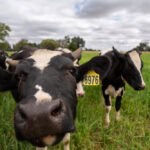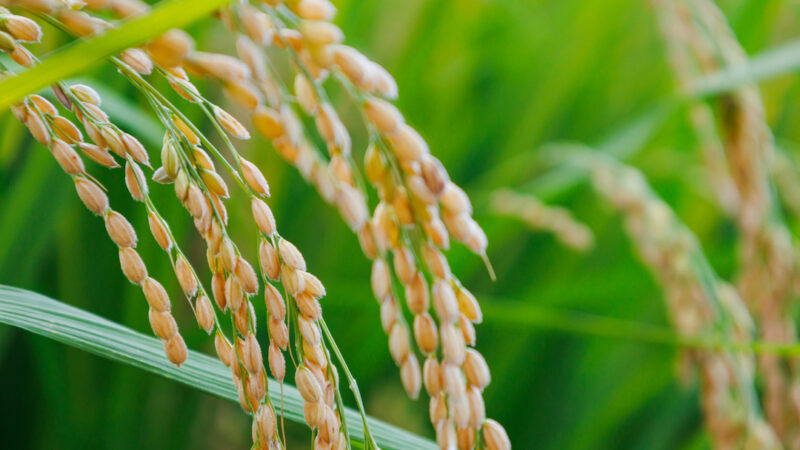When Australians were forced to close their doors on the outside world and isolate themselves…
Drone swarm technology is shaping the agricultural industry
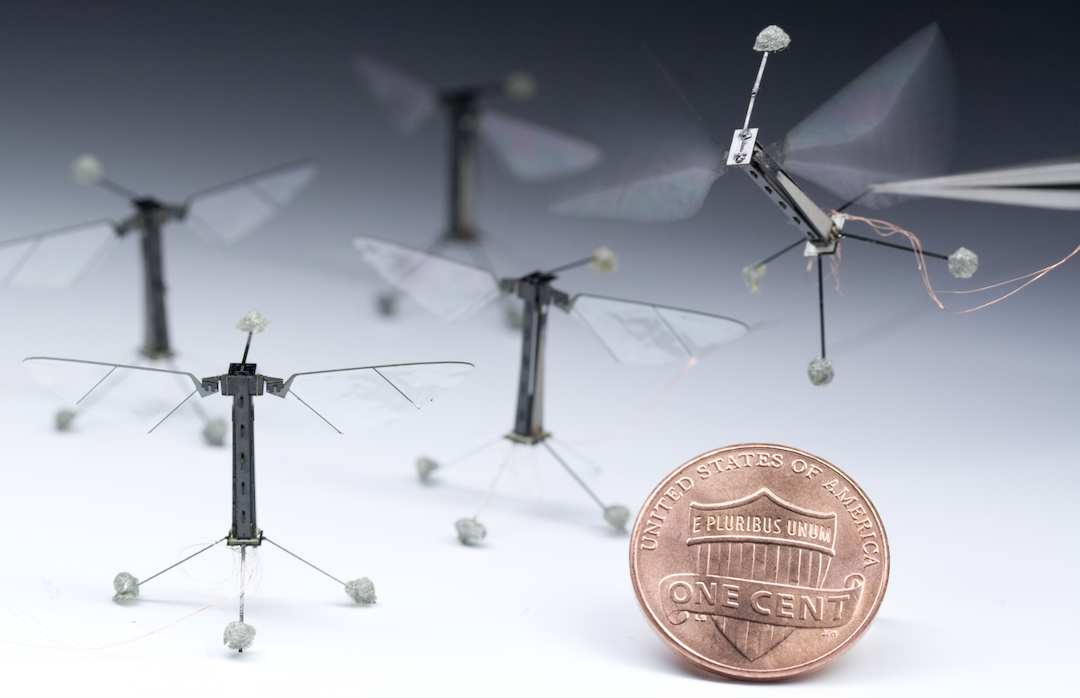
Drone swarm technology that mimics birds and bees is coming to agriculture as part of the artificial intelligence (AI) revolution. Advances in AI and drone components have made nature-inspired swarms possible � and the applications for agriculture are seemingly endless.
Imagine swarms of insect-sized drones capable of pollinating flowers using simulated bee fur and AI technology to avoid obstacles, or a flock of drones sent in to target a disease outbreak in an apple orchard.
Imagine no more. Drone swarm technology is becoming reality thanks to AI, and it is poised to revolutionise farming practices in ways that were once unthinkable.
Researchers are delving into advanced methods of drone control using �swarm intelligence� based on the collective behaviours of insect colonies and flocks of birds, as well as AI techniques to teach drone swarms to respond to new or unexpected situations.
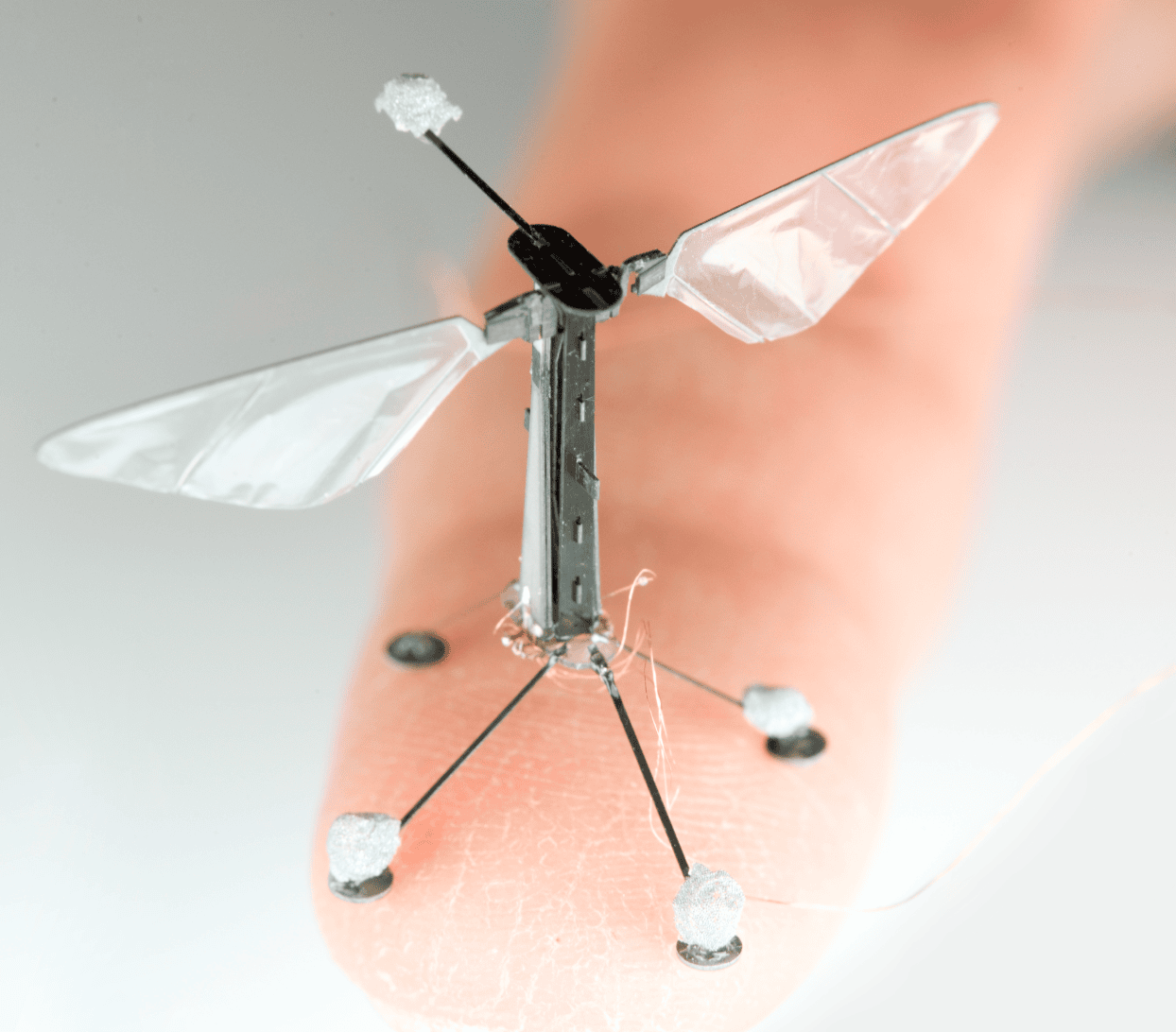
Inspired by the biology of a bee, researchers at Harvard University are developing RoboBees, which are about half the size of a paper clip and fly using �artificial muscles� to potentially pollinate crops. They have not been flown outside the lab yet but have demonstrated co-ordinated behaviour in large groups. �
AI is also being used to mimic the natural world with swarms of larger drones. Canadian start-up Fast Forest announced plans last year to release a �flock� of AI-directed drones armed with air pressurised cannons to plant tree seeds. The group estimates a single drone operator would be capable of planting 100,000 seed pods per day, with the goal of planting one billion trees for reforestation by 2028.
In simple terms, drone swarms are a collection of drones that communicate with each other to accomplish a task as one cohesive unit. The use of AI enables the swarms to autonomously navigate and avoid obstructions like trees and animals.
Agricultural drone expert and trainer, Ben Watts, said the future of farming with swarms of drones is a compelling vision that promises increased productivity and efficiency.
�I see real merit in this technology for high value horticultural crops for time-critical pest and disease management that could be quicker than using machinery,� Ben says.
�There are some absolutely amazing things happening that will be game-changers, but there are some obstacles to this technology in Australia.�
Ben is well versed in the regulatory, safety and farming aspects of drone technology after training thousands of farmers through the NSW Farmers Association Drones in Agriculture program, which is funded by AgSkilled.
�Advances in technology are outpacing legislation in Australia. There are safety and privacy concerns that do need to be considered with any use of a drone.�
Ben said commercial interest in adopting the technology in Australia is limited due to strict regulations, cost and a lack of research and development on its applications in agriculture.
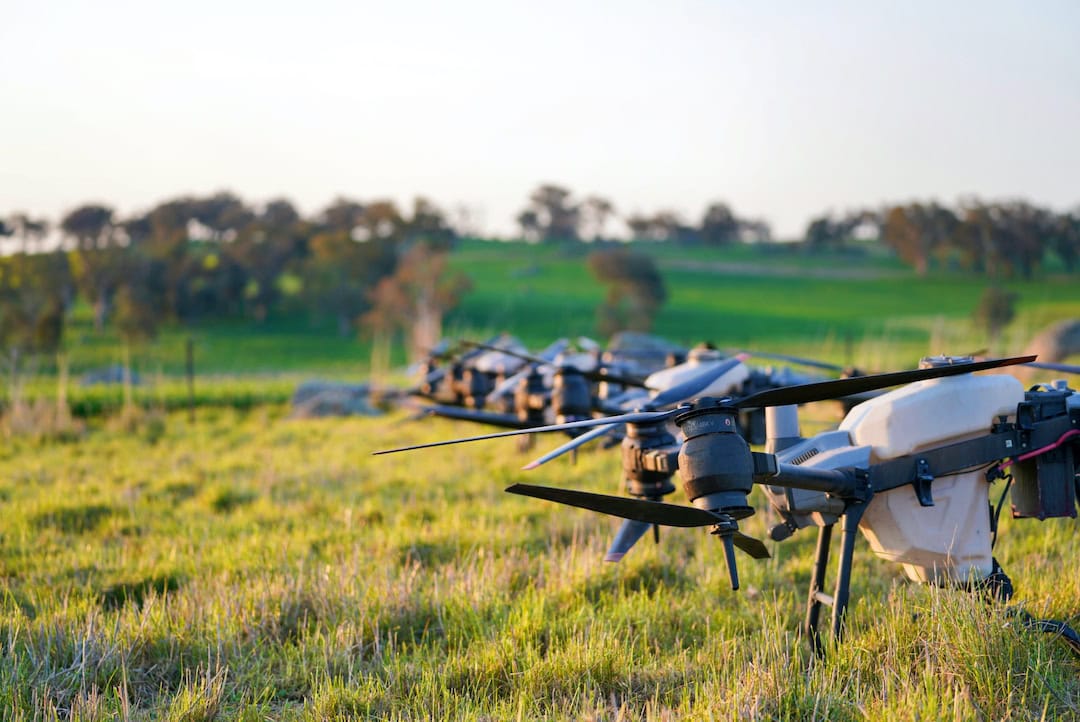
Drone swarm technology was used last year as part of a human-machine team demonstration at Puckapunyal conducted by the Australian Army�s Robotic and Autonomous Systems Implementation & Coordination Office (RICO). The Australian Defence Force has also collaborated with their British and US counterparts on a military trial of AI-enabled drone swarms.
The Civil Aviation Safety Authority (CASA) has approved the technology for use in the entertainment industry, with companies like the Central Coast�s Swarming Drones offering animated sky shows from up to 100 drones.
Farmers can use multiple drones or drone swarms for tasks such as spraying broadacre crop if they have a remote pilot licence (RePL), a remotely piloted aircraft operator�s certificate (ReOC) and gain CASA approval to operate more than one drone at a time.
LyonAg leads the way
Agricultural drone technology companies such as Tamworth-based LyonAg Drone Solutions are using multiple drones to spray up to 45 hectares per hour in broadacre crops. It is not classed as drone swarms as multiple operators are involved, but they are working in unison through �routing segment� technology that gives each drone different sections of the paddock to cover.
Owner of LyonAg Drone Solutions, James Lyon, travels across eastern Australia in a truck that features a 40kVA generator to keep the energy up to his team of four hardworking DJI T40 drones.
�Each drone carries 40 litres of liquid and it pumps it out at 12 litres per minute. In ideal conditions, that can result in covering up to 15 hectares per hour, but in most cases we get 12.5 hectares per hour done,� James explained.
�The DJI drones we use don�t support the swarming feature at this stage. We have played around with it, but it�s still too problematic, for a number of reasons.�
James said AI advances will change that, as it has for using drones as a precise identifier and killer of agricultural and environmental weeds.
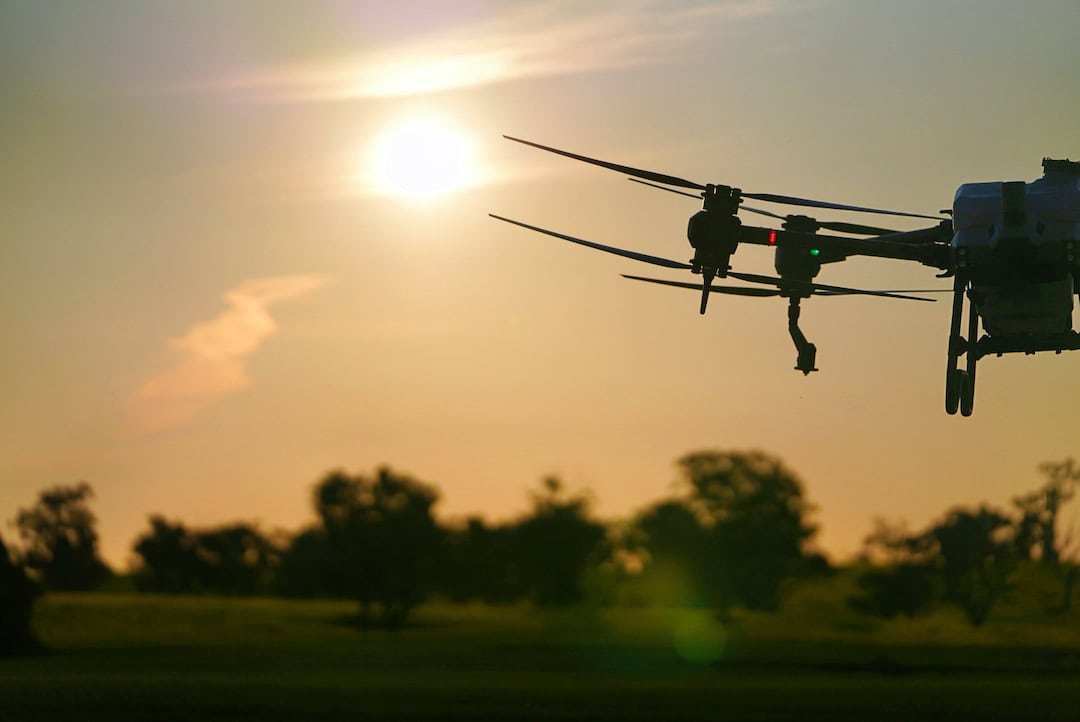
A small team of software engineers have helped James incorporate AI weed detection algorithms and software into his drones that can then interface with the DJI ecosystem and direct spray drones to target weeds.
�The AI algorithms learn to identify the weeds based on colour, texture and contrast to surrounding plants, and we can also filter based on size and height of the plant,� says James.
�The drone does a mapping mission of an area to detect weeds. All those AI-detected weeds are then loaded via our software into the DJI spray drone system for spot spraying and variable spray programs.
�For example, we can also do that with the spot dropping of herbicide granules on woody weeds in grazing country. We did this on a station in North Queensland, using AI to detect exotics weeds like Chinese apple. We then 3D printed measuring devices to add to the bottom of drones to precisely drop just 30 grams of Graslan granules on top of the tree.
�It is a very exciting space to be involved in. It�s also expensive because the technology moves so quickly that your investment can become obsolete in less than a year.�
NSW Farmers members can access exclusive DJI drone packages suited for farming businesses through partner Prisma Tech. Contact Prisma Tech on (02) 4258 3489 or [email protected]. �
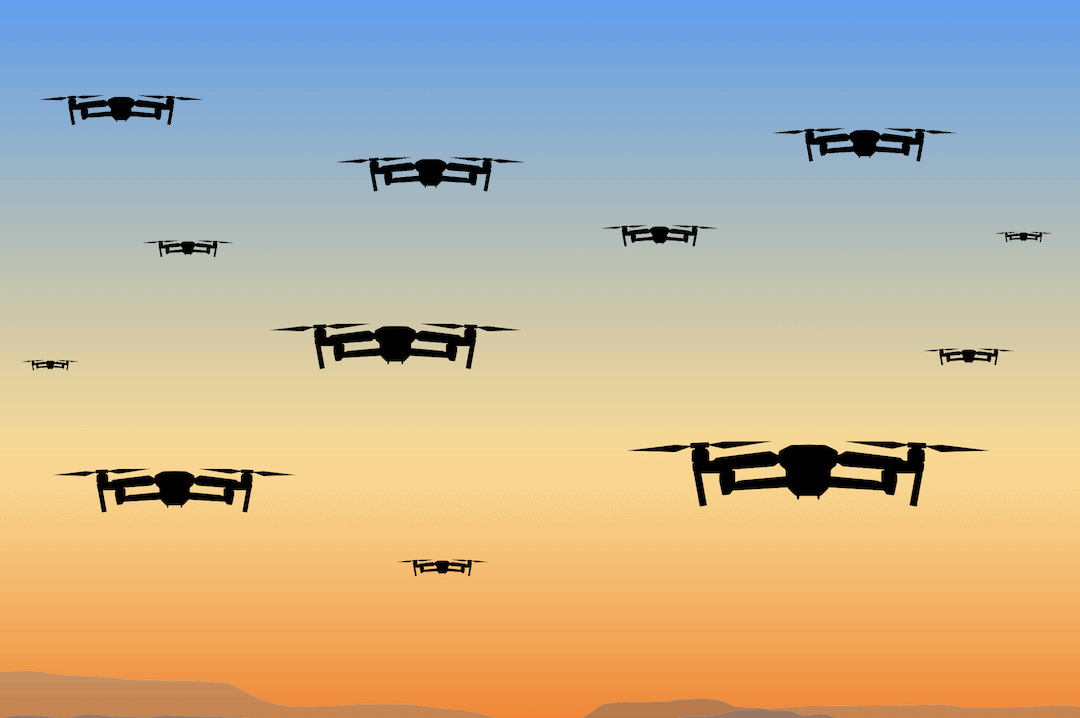
CSIRO releases AI-driven weed app
The CSIRO has used its AI identification model to develop an app to help farmers, land managers, local councils, and Landcare to manage local weed burdens.
Launched in December last year, the mobile and web-based app WeedScan is supported by the Centre for Invasive Species Solutions, Australia�s national science agency CSIRO, the NSW Department of Primary Industries (DPI) and the South Australian, Queensland and Victorian Governments. It allows users to identify, report and map priority weeds simply by uploading a photo of the suspected weed.
Dr Alexander Schmidt-Lebuhn, Senior Research Scientist at CSIRO, says that WeedScan is a powerful tool, driven by a world-class CSIRO AI identification model and training on more than 120,000 weed images.
�Our AI model has been trained on weed images captured by botanists who travelled the length and breadth of Australia, and then tested across Australia by a range of users such as farmers, community groups and agronomists,� he says.
�The AI has the smarts to identify hundreds of priority weeds, and other weeds to give us the edge we need in the fight to protect our natural environments and agricultural landscapes.
�Users simply take a photo of a suspected weed and upload it to the app. The AI model assesses the photo against verified images of weeds. Within seconds, WeedScan suggests possible plant identifications, with degrees of confidence for each suggestion.�
WeedScan can be downloaded from the App Store (iOS) or Google Play (Android). The tool can also be accessed via WeedScan�s website with supporting resources including user guides and an introductory �how-to� video.
To learn more about the use of drone technology in agriculture, click here.



